Avoiding the Pitfalls of Home Addition Construction

Posted in Architecture by John Trupin

When dissatisfaction with your current home strikes, it can be exciting to launch into a plan for a new addition. A new living room, bedroom, or more can add value to your home while improving your quality of life.
On the other hand, even a modest addition can turn into a major construction project, with architects and contractors to manage, construction workers traipsing through your home, hammers pounding, and sawdust everywhere. And although new additions can be a very good investment, the cost-per-square-foot is typically more than building a new home, and much more than buying a larger existing home.
Define your needs
To determine if an addition makes sense for your particular situation, start by defining exactly what it is you want and need. By focusing on core needs, you won’t get carried away with a wish list that can push the project out of reach financially.
If it’s a matter of needing more space, be specific. For example, instead of just jotting down “more kitchen space,” figure out just how much more space is going to make the difference, e.g., “150 square feet of floor space and six additional feet of counter space.”
If the addition will be for aging parents, consult with their doctors or an age-in-place expert to define exactly what they’ll require for living conditions, both now and over the next five to ten years.
Types of additions
Bump-out addition—“Bumping out” one or more walls to make a first-floor room slightly larger is something most homeowners think about at one time or another. However, when you consider the work required, and the limited amount of space created, it often figures to be one of your most expensive approaches.
First-floor addition—Adding a whole new room (or rooms) to the first floor of your home is one of the most common ways to add a family room, apartment or sunroom. But this approach can also take away yard space.
Dormer addition—For homes with steep rooflines, adding an upper floor dormer may be all that’s needed to transform an awkward space with limited headroom. The cost is affordable and, when done well, a dormer can also improve the curb-appeal of your house.
Second-story addition—For homes without an upper floor, adding a second story can double the size of the house without reducing surrounding yard space.
Garage addition—Building above the garage is ideal for a space that requires more privacy, such as a rentable apartment, a teen’s bedroom, guest bedroom, guest quarters, or a family bonus room.
Permits required
You’ll need a building permit to construct an addition—which will require professional blueprints. Your local building department will not only want to make sure that the addition adheres to the latest building codes, but also ensure it isn’t too tall for the neighborhood or positioned too close to the property line. Some building departments will also want to ask your neighbors for their input before giving you the go-ahead.
Requirements for a legal apartment
While the idea of having a renter that provides an additional stream of revenue may be enticing, the realities of building and renting a legal add-on apartment can be sobering. Among the things you’ll need to consider:
- Special permitting—Some communities don’t like the idea of “mother-in-law” units and therefore have regulations against it or zone-approval requirements.
- Separate utilities—In many cities, you can’t charge a tenant for heat, electricity, and water unless utilities are separated from the rest of the house (and separately controlled by the tenant).
- ADU Requirements—When building an “accessory dwelling unit” (the formal name for a second dwelling located on a property where a primary residence already exists), building codes often contain special requirements regarding emergency exists, windows, ceiling height, off-street parking spaces, the location of main entrances, the number of bedrooms, and more.
In addition, renters have special rights while landlords have added responsibilities. You’ll need to learn those rights and responsibilities and be prepared to adhere to them.
Average costs
The cost to construct an addition depends on a wide variety of factors, such as the quality of materials used, the laborers doing the work, the type of addition and its size, the age of your house and its current condition. For ballpark purposes, however, you can figure on spending about $200 per square foot if your home is located in a more expensive real estate area or about $100 per foot in a lower-priced market.
You might be wondering how much of that money your efforts might return if you were to sell the home a couple years later? The answer to that question depends on the aforementioned details, but the average “recoup” rate for a family room addition is typically more than 80 percent.
The bottom line
While you should certainly research the existing-home marketplace before hiring an architect to map out the plans, building an addition onto your current home can be a great way to expand your living quarters, customize your home, and remain in the same neighborhood.
Weekend Warrior: Quick projects to upgrade your home

Memorial Day traditionally represents the kick-off of summer. Kids are getting out of school, families are making summer vacation plans, and backyard barbeques are on everyone’s minds. This is also a great time of the year to get your house in order and ready for the summer season. The following is a handful of ideas and tips to help you with this process.
Outdoor spaces
 Gardening– It’s not too late to start your garden! This weekend I will be planting an herb garden; I planted summer vegetables a few weeks ago. If you’re thinking of doing the same, just make sure you use starts because many summer harvest vegetables won’t start from seed this late in the season.
Gardening– It’s not too late to start your garden! This weekend I will be planting an herb garden; I planted summer vegetables a few weeks ago. If you’re thinking of doing the same, just make sure you use starts because many summer harvest vegetables won’t start from seed this late in the season.
Outdoor living– My home has an outdoor space with great potential, including a partially covered patio perfect for entertaining. This weekend I plan to upgrade the space with small touches to make it summer party ready. This includes finding outdoor lighting options, updating the seating and cleaning up the barbeque.
BBQ- Make sure your grill is ready to go this season by making sure everything is clean and in working order before you fire it up. In the northwest that includes making sure the fuel lines are spider-web-free. Also, make sure you have propane or charcoal on hand for impromptu dinners.
Clean Windows- Now is a great time to clean your windows, inside and out. Sun shows more dirt and smudges.
Lawn care- Prepare your lawn for the months ahead. Depending on where you live this means different things. Check your sprinkler system to make sure it wasn’t damaged over the winter; upgrade your lawn care to ensure fuller greens, check for and remove moss to prevent dead patches and start your weeding regimen.
Pool prep- If you have an outdoor pool get this ready for a summer season of fun in the sun, (unless you are lucky enough to enjoy your pool year-round). Same goes for hot-tubs. Make sure your equipment has been serviced, chemicals are available and your pool is clean and ready to use. OR, head to the local hardware store and buy your kiddie pool now before they run out, as I learned one particularly hot July!
De-winterize- I once was doused head to toe when we were turning the water back on to our exterior pipes because the pipe had split in the winter- so make sure all your pipes survived the cold, check your winterized projects and prepare your house for summer. This is also a good time to look around the exterior, checking roof, gutters and siding.
Summerize- Check or replace AC filters, window screens, and household fans to make sure these are all functioning and will help provide maximum circulation in your house. Consider installing an attic fan or vent to help pull heat out of your home all winter long. Pack away excess cold weather items such as heavy blankets, jackets and other items so they aren’t in your way. Same goes for any sundry items you only use during fall and winter.
Inside spaces
Lighten the Space- Though I likely won’t spend much time inside once the mercury rises, I want to keep the house as light and cool as possible. I have found that replacing the curtains with a lighter shade lets the light in, but also keeps the rooms from overheating from sun exposure. Summer always makes me want to lighten up with the accessories- lighter colors, more whites, bright accents and less clutter.
Rearrange – Freshen up spaces by rearranging some of your wall art. If you don’t have enough wall pieces to rearrange regularly it may be time to add to your collection. You can find inexpensive original art online at stores such as Etsy or in person at local galleries. You can always play with other items like framed images from books, vintage posters or record albums. Here are some terrific ideas for using what you have to add interest to a room.
 Air it out- Open all the windows, shake out the rugs and update home fragrances to fit summer moods (citrus, freesia, clean linen, coconut, melon, fruits and tropical, etc.). You can create your own diffuser with essential oils to distribute fragrance. This may be more symbolic than practical but it always makes me feel ready for summer.
Air it out- Open all the windows, shake out the rugs and update home fragrances to fit summer moods (citrus, freesia, clean linen, coconut, melon, fruits and tropical, etc.). You can create your own diffuser with essential oils to distribute fragrance. This may be more symbolic than practical but it always makes me feel ready for summer.
Paint- If you have a room you really want to refresh, a three-day weekend is a good time to take on a project of scale, so you have plenty of time to prep, paint, dry, and clean up. Painting is one of the least expensive ways to really transform how a room feels. Need help picking colors and paint type? Here is some good advice.
Garage or Basement- Tackle a big space that makes a big difference. Our garages and basements often become year-long dumping grounds for seasonal decorations and clothing, items that don’t fit in cabinets, memorabilia and maintenance tools. Go through your items and sort by keep, throw out and donate/sell and then group your keeps by function. Make sure your tools are accessible for easy gardening and entertaining by making sure your tools are accounted for, ready to go, and easy to reach. Here is a useful video on garage organization.
Yard/Garage Sale- If you have overflow at your house, plan a yard/garage sale to get rid of items you no longer need or want. Just make sure to pack everything up and donate it at the end of the sale otherwise you are just letting the clutter back in!
Plan a party- Once your space is all cleaned up and redecorated you will want to show it off! Plan a summer BBQ, dinner party, pool party, picnic or any other gathering.
What are your planning for Memorial Day weekend?
Spatially Limited Gardening: The Indoors is the New Outdoors
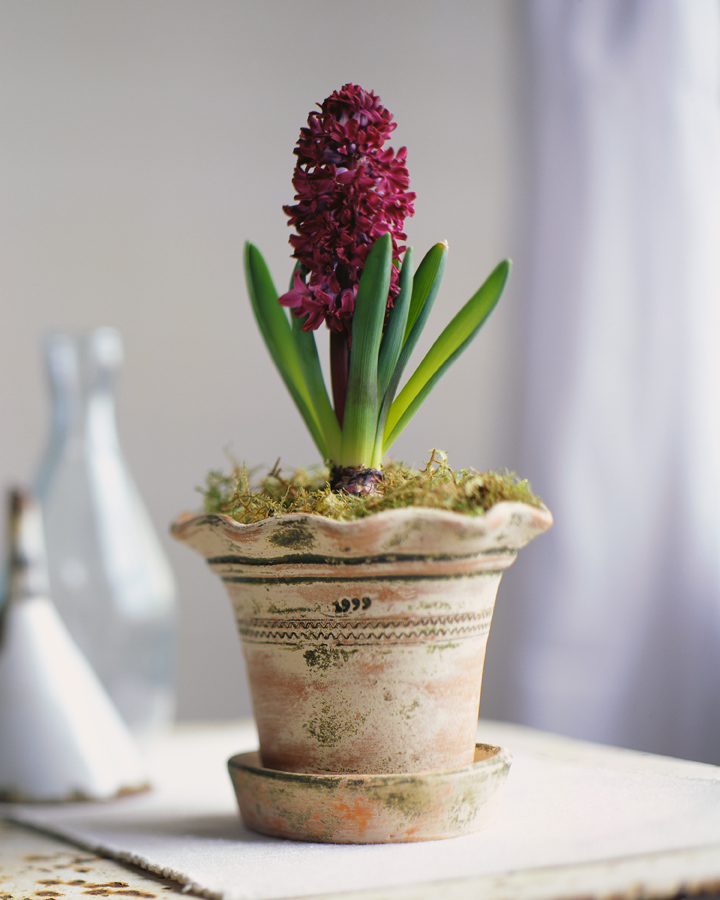

It is the official start to the gardening season! For those who have large outdoor spaces, it is the perfect time of year to make a trip to the home and garden store, work in your gardens, and plant new growth. For those who live in smaller city quarters and whose outdoor space comfortably holds little more than a potted plant, we are forced to be more creative with our green space.
Decorative plants and nurturing vegetation is something that makes my house a home, even if small city living quarters has forced us to learn to take the outdoors- in and work with what space we have. Indoor plants, flowers, and gardens are a pleasing alternative when you do not have the space or the desire to be outdoors. Adding some green to your home can be decorative, fragrant, and even edible. Planting and nurturing your growth is a fun do-it-yourself project that can be a whole household activity.
Where to start
How will you grow and what supplies will you need? First decide on your method of growing.
Traditional Potted Plants are a great starting point for the non-gardening types. Potting plants is relatively simple, cost efficient, and spatially low maintenance. Check out these ideas for potting and planting in small spaces.
Vertical Gardens break away from the customary terracotta pot. They are both modern and space saving. In a vertical garden you are able to grow a variety of plants, flowers, herbs, and vegetables. They can be practical and decorative inside or out. Learn more about creating your own vertical garden here.
Hydroponic Systems are a soil-free gardening solution that can involve little to no pesticide use. Green Tree’s Hydroponics reports that the growth rate of a hydroponic plant is 30-50 percent faster than that of a soil plant. Here’s what it takes to build your own, however you can also purchase hydroponic systems online.
Terrariums are “making a comeback” according to the New York Times. Terrariums can be uniquely ornamental and perfect for tight spaces that need a hint of green. Check out some samples and get design ideas here.
What growing methods have worked well for you?
What to grow?
That are good to eat …
Herbs: growing edible items can be very rewarding. Herbs are my go-to item to grow inside because they are low maintenance and take up little space. I prefer to pot basil, parsley, chives, thyme, cilantro, and oregano.
Grasses, like wheat grass, are becoming popular to grow indoors and decorate your home with.
Fruits and vegetables tend to take up more space and are more demanding. However tomatoes, peppers, radishes, leaf lettuce, potatoes, and carrots are a few fruits/vegetables that will grow well indoors.
That are good to look at …
Several flowers and house plants will flourish and bloom indoors. I enjoy the fragrance of Gardenia and the appeal of a Boston Fern in a hanging basket. However, using a plant encyclopedia will help you find which plant is right for you and your home.
What do you prefer to grow?
Making it look good?
The great part about bringing your garden inside is that it lets you use vegetation as a decoration. Whether you prefer to arrange flowers, string kokedama, or paint a fun plant pot, your vegetation and the way you display it can have an impact to your overall décor. How do you decorate with your vegetation?
Brittany Lockwood works in Marketing at Windermere Real Estate. She is the in-house expert on weatherizing, yard-sales, and interior design.
Let’s Make Your 4th of July a DIY Breeze
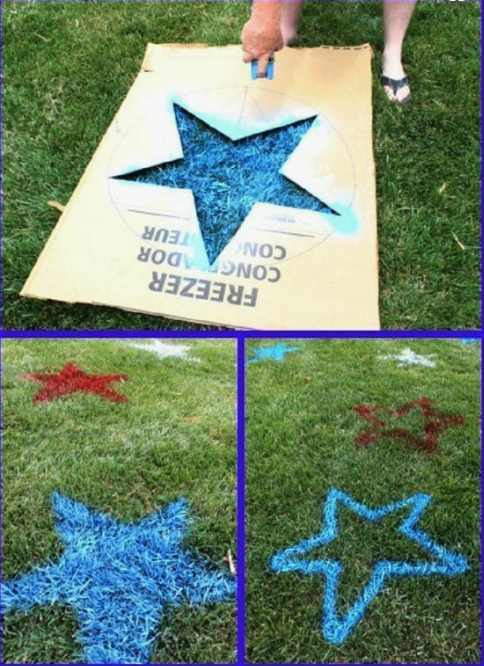
If you have ever had the responsibility of hosting a get-together for July 4th, you probably know that it can be a daunting task. Between barbecuing, decorating, and general mayhem, this patriotic holiday can feel like its own brand of work. To ease those stresses, we’ve gathered up a few of our favorite DIY patriotic traditions that can make everyone’s lives easier. Who knows, you might even have a little fun with them!
Make decoration creation a family event
If your attic shelters a full array of patriotic decorations, it may be no trouble for you to adorn your home appropriately. For the rest of us, here are some family-friendly options for last minute party décor.

Credit: dreamingindiy.com
- Grab several slats of wood, paper, or any other surface you feel comfortable displaying.
- Set up a “paint-friendly” space, ideally outdoors, with rags or paper laid out underneath to avoid excess mess.
- Optionally, you can create or buy stencils of flags, fireworks, stars, and other thematic artwork to help guide the youngest in the group.
- Set up the kids with age-appropriate artistic implements and let them go wild. While a watchful eye will surely remain necessary, not only will you have family-approved decorations for the weekend, you might just get a moment to actually catch up with one another.
It’s the little things

Credit: zullily.com
- Candle holders and vases make just as big an impact in theming as grand gestures. Small DIY decorations such as adding stars and stripes to your accent pieces helps flesh out the theme you’re going for.
- By sticking with a consistent artistic tool (sharpie, paint, pencil, etc.) you can deliver a sense of consistency to your guests while saving yourself time an effort.
- Function can be found in all sorts of items. If you find yourself caught in a windy day on Monday, your creations can play double-duty as paperweights and board game savers.
Help nature help you

Credit: Kathy Quillian
- The simplest of decorations are those that grow all by themselves. Whether in bouquet form, wreaths, or, in your own garden, natural coloring adds the perfect touch to your party decor.
- Mixing roses, petunias, and irises creates a charmingly patriotic array.
- Plan for your guests! Will there be children at your party? Setting out a dozen single-stem vases will look great but may lead to disaster, so consider your audience before decorating.
Just a Dash of Feng Shui
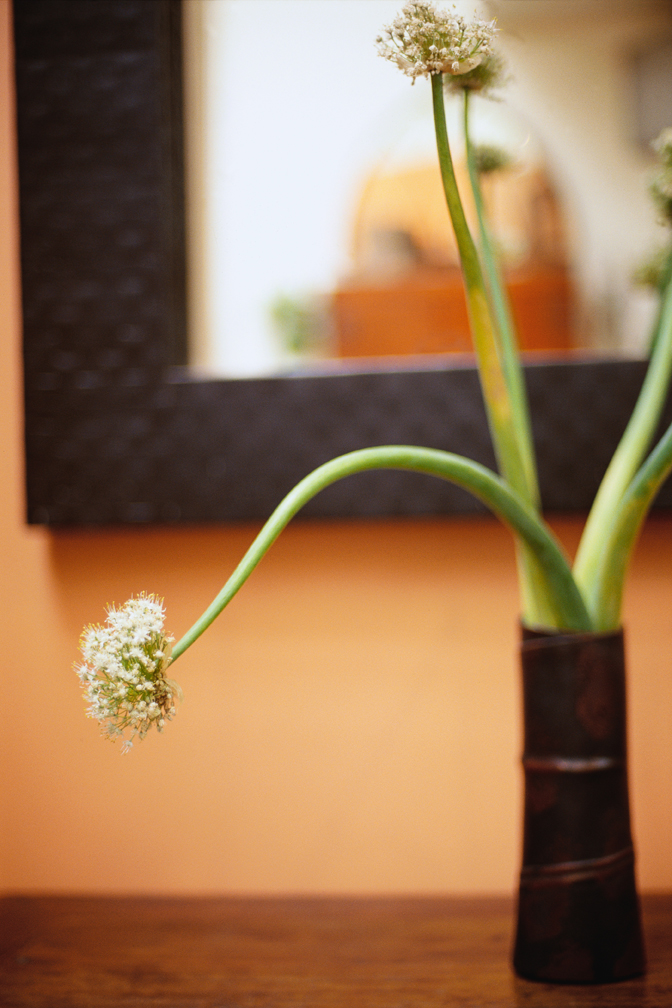
 What is a home if not personalized to those who share its walls? Feng Shui is intended to create a place of peace, balance and harmony for you and yours. You can achieve this type of atmosphere through the things you bring into your home and the way that you stage your environment.
What is a home if not personalized to those who share its walls? Feng Shui is intended to create a place of peace, balance and harmony for you and yours. You can achieve this type of atmosphere through the things you bring into your home and the way that you stage your environment.
Feng Shui helps enhance your space and deliver positive energy by creating a more comfortable, clutter-free environment, and incorporating the influential elements found in nature. A recent article titled Feng Shui Basics for Home Decorating provides what I consider the simplest definition: “the use and placement of objects and materials to create a harmonious flow of life energy. As such, the design of each room should be based on the people who use it the most.”
To better understand Feng Shui, it is important to know the elements in which it is grounded: Water, Earth, Fire, Metal and Wood. Incorporating these elements into your home can be surprisingly simple, inexpensive, and do-it-yourself.
Element by element, here are some ideas and explanations of Feng Shui for your home:
-
- Water: The water element also includes wind. Blues and blacks represent this element, as does integrating a water source in a home, which gives off a presence of refreshing movement. Rock fountains and indoor aquarium tanks are common in Feng Shui-oriented homes.
Using mirrors in your home can be another way to incorporate the water element. The reflective surface of a mirror is similar to the properties given off by a pond or lake. A fashionable mirror can be arguably as attractive as a framed picture, and doubles as being resourceful when you would like to check out your look. Decorating with mirrors can be perfect for a living room space that needs light and enlargement, and a flow of movement.
The living room is typically one of the largest shared spaces of movement in a home, so incorporating a tasteful mirror in this room would be oh-so-appropriate.
-
- Earth: “Adding the earth element to your home quarters strengthens feelings of safety and security. The grounding support of earth energy should bring comfort to the soul and tone things down” is how Happy Home Zone describes home decorating with the earth element.
A simple way to add the earth element to your home is by use of color, and earth tones are the most obvious source. But if tans, browns and oranges are not your thing, try a deep red, mossy green or an off shade of white.
You don’t need to paint every wall or replace your furniture. Start small with a cream throw or piece of artwork. Cream is a color that matches almost any other. Earth tones in beiges, brown, tans and off-whites are also aesthetically pleasing accent colors.
Due to the calming, soothing properties earth tones extract, your bedroom would be a perfect place in which to add this element.
-
- Fire: Another element you may consider incorporating into your bedroom is fire, due to its association with passion, happiness and love. Keep in mind, however, that fire should be used lightly; in large amounts its passionate properties can give off anger vibes.
An article titled How to Decorate with Earth, Fire, Wind and Water suggests incorporating the fire element through the use of “silks and synthetic fabrics, images of sunrises, geometric abstracts, triangular shapes, animal patterns, the color red and candles”.
Candles are always in style, fit well in nearly any room, and come in a variety of shapes and sizes. They can be inexpensive to buy or a fun Do-It-Yourself craft project. A candle display can work nicely in a bathroom and double as an air freshener.
-
- Metal: According to Spiritual Feng Shui.com, “metal is a symbol of wealth and protection. Metals include stainless steel, aluminum, sterling silver, or iron.”
One of the most obvious places to incorporate metal would be in your kitchen. But metal has taken on a new trend outside of kitchen appliances; metal decorations can be used in any room you choose, and can be trendy and tasteful for both men and women. Check out these great precious metals and be inspired!
-
- Wood: The wood element represents growth, and can be incorporated through almost any vegetation you choose to bring into your home. Indoor herb gardens or a potted houseplant can enhance your home aesthetically by being decorative and fragrant.
Growing your own edible vegetation can be a profitable experience, saving money on your grocery bill and adding flavor to your food. But if you lack the outdoor space to do it, read how indoor gardens can be accommodating. Indoor gardening is something your entire household can get involved in and enjoy.
Essentially, among other properties, Feng Shui is about balance – balance in your environment for you and for those with whom you who share your space. If Feng Shui is something you are interested in, start by adding a few of these elements into your décor and gradually increase them as you see fit, to find what balances your home best for YOU.
How do you achieve balance in your living space?
Brittany Lockwood works in Marketing at Windermere Real Estate. She is the in-house expert on weatherizing, yard-sales and interior design. She lives in Seattle in a renovated condo which she enjoys re-arranging and decorating.
Three Projects, Three Ways: Valentine’s Gifts for Your Loved Ones

Love it, or hate it, Valentine’s Day is fast approaching! If you want to create a thoughtful gift for a loved one (or for yourself because you TOTALLY deserve it), try one of these easy, inexpensive, do-it-yourself Valentine’s Day ideas!
Three-dimensional flower art:

The ladies at “A Beautiful Mess” have amazing craft ideas, so we decided to try out their flower collage. The results are so fun!
Supply list:
A favorite family picture- blown up to 5*7 or larger
Fabric flowers; you can find these at a local craft store. For a fun touch, pick up some fabric butterflies too
Hot glue gun and glue sticks
A shadow box or a picture frame with the glass popped out
Directions:
Let inspiration be your guide; mock up your design before breaking out the glue gun
Glue flowers around the frame
Let the glue dry and then display your work of art!
Difficulty level: 1
A heart shaped picture collage:

Do you have so many favorite photos that you can’t pick just one? Are you an Instagram addict? Then this fun project is for you. You can use as many pictures as your frame will fit.
Supply list:
A picture frame
A piece of cardstock or paper cut to fit your frame
Cardstock cut into a stencil heart shape
A pile of your favorite photos
Scissors
Craft glue or scrapbooking adhesive
Fancy accent paper (optional)
Directions:
Decide the quantity of photographs you want to display
Arrange your photos on your blank sheet to determine the best placement
Cut each photo into the same size heart (use a stencil heart or heart shaped paper punch for this)
Arrange your pictures on the card stock
If you want to add some dimension, cut out hearts from the fancy accent paper to display behind your photos
Once everything is exactly how you like it, glue it all down
Let everything dry and finish by adding your frame!
Difficulty level: 2
The writing’s on the wall

Do you have a favorite quote about love? Make a modern wall hanging with some simple tools and your favorite words!
Supply list:
A wood frame for stretching canvas (can be found online or your local craft store)
Dark denim (enough to fit over canvas with a couple of extra inches all around)
A white fabric pencil
White fabric paint
Small acrylic paint brushes (with stiff bristles)
Masking tape
A staple gun and staples
A printed template of your favorite quote, as you would like to see it displayed
A window with natural light

Directions:
Tape your printed quote to a window with natural light shining through
Tape your fabric swatch over your template, and position the image/text in the middle of your fabric swatch (dark side facing you)
Using the white pencil, trace the quote and/or image clearly on your dark fabric
Once done, remove your fabric from the window and tape to a flat surface like a desk or table
Use the paint brush and white fabric paint to trace over your white sketches to make your text and/or image visible
Let your masterpiece dry for a few hours (amount of time varies based on the thickness of the applied paint)
Position your fabric over your wooded canvas frame. Make sure the placement is straight and where you want it
Hold your fabric in place over the frame and staple the sides to the back of the wooden frame, checking to make sure your image on the front is straight and the fabric is taught on the frame
If the fabric on the back of your frame is too long, you may want to consider trimming so it doesn’t peek out when the frame is hung on the wall
Find the perfect spot to hang your masterpiece or the perfect person to gift it to!
Difficultly level: 3
Happy Valentine’s Day!
How to Install a New Tile Floor
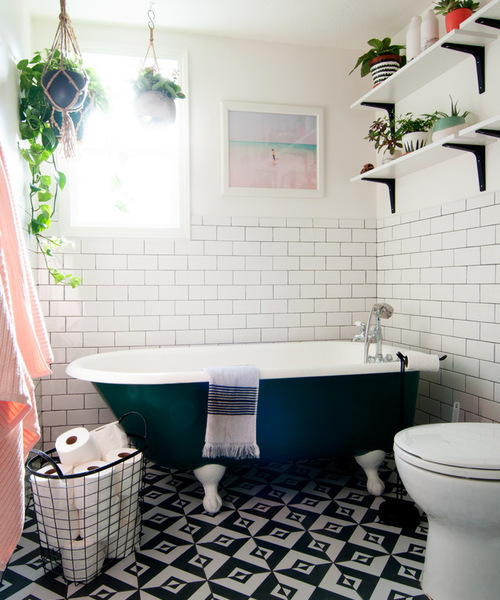
A fresh, new floor is one of the most popular ways to update a bathroom. In fact, floors are among the top three features to upgrade during a master bathroom remodel, with about 91 percent of renovating homeowners making an improvement to this area, according to Houzz research. But what’s involved? And can you do it yourself?

Tile Floor 1: Alexandra Crafton, original photo on Houzz
Related: Considering a Clawfoot Tub? Here’s How to Get a Freestanding Tub for Your Bathroom
For some homeowners, laying tile that you’ll walk on for years to come can elicit a great sense of pride. Others may find the process a bit overwhelming. Read on to determine whether you’d like to tackle this yourself or hire a pro.
Project basics: Installing tile involves stripping the floor down to the substrate, installing a backer board or underlayment, adhering the tile to the floor and grouting it. Depending on the material, sometimes a sealer is needed to protect the material from stains or damage.
It’s a good project for you if: You have the ability to lift 50 pounds, can work on your knees without trouble and don’t have back issues, says Chris Harper, general contractor and partner at Harper Construction in Charleston, South Carolina. You also need to be able to follow directions and have a decent amount of patience. “It’s simple,” Harper says. “But simple does not equal easy.”
Things to consider: Before you decide whether to DIY or hire a contractor, think about the pattern you want to install. Is it basic and fairly straight? Then you might be just fine trying your hand at a little tile-laying. Going for something more complex, with angles or curves involved? You might want to leave the headache to a professional. The idea here is to match your skill level, DIY confidence and tolerance for imperfections to the task. Some creative people find no tile challenge is too great. Others who are certain they’ll be annoyed by off-kilter or irregular grout lines may want to enlist the help of a pro.

Tile Floor 2: Howells Architecture + Design LLC, original photo on Houzz
Another thing to consider is the condition of your subfloor. Chris Chumbley, vice president of USI Design & Remodeling in Southlake, Texas, says that on the concrete slabs common in his area, you must be sure the floor is properly prepped and cleaned and any spiderweb cracks addressed before tiles go down. Also, “you want to make sure your floors are laid level,” Chumbley adds. If assessing these conditions is beyond your DIY depth, even after reading up on the process or watching a host of YouTube videos, you may want to call a professional.
“The bigger the tile, the more challenging,” says Joe Smith, general contractor at Owings Brothers Contracting in Eldersburg, Maryland. A larger tile is more likely to show imperfections since a 2-foot tile may bow over an unlevel subfloor, while a 1-inch tile would climb right over the floor’s curves.
“Natural tiles cost more to install because you have to clean and seal them before you set them,” Smith says. “Glass and marble cost more because you have to prep [them] correctly.”
As you consider various tile options, also think about how well the type of material wears and how hard your family is going to be on it. Porcelain tiles wear “like steel,” Chumbley says, but limestone is more delicate.
Who to hire: A reputable tile setter or a general contractor who will oversee a tile specialist.
Basic steps: Decide what type of tile you want to install. You can get ideas in tile showrooms, magazines and photos and tile product shots on Houzz.
Next, consider the steps that will be involved, from demolition of the existing floors to any work that may need to be done to prep them for new tile installation. Leveling the floors and assessing any substrate issues is likely to be the most technical part of this project. Harper recommends consulting a general contractor who will “look at the structure of the subfloor and at all the angles to make sure what’s getting done is appropriate and will last for a long time.”

Tile Floor 3: Jay-Quin Contracting Inc., original photo on Houzz
How: It’s critical that you don’t install tile on old layers of linoleum, Harper says. Remove any old flooring and get down to the substrate. Needed repairs or leveling of the bare substrate come next.
Once the subfloor is ready, the next basic step is installing cement backer board or an uncoupling membrane. Both materials serve as the underlayer to the tile floor and help prevent cracks.

Tile Floor 4: Blank Page Design Build, original photo on Houzz
Joints should be staggered, not all lined up in a row, to make the floor more stable. “Once it’s all down, it’s a smart thing to go back and check everything and make sure all of those boards are secure by walking across and checking and making sure you have screwed things to the floor appropriately,” Harper says.
Next, mark out the tile layout. “Don’t start with the tile against one wall and go across the room,” Chumbley says. It’s better to start from the center of the room and work your way out. The layout of the tile is typically marked in chalk. The width and color of the grout are part of the aesthetics. The tile layer can use spacers to keep the tiles evenly apart as the pattern progresses.

Tile Floor 5: R.M. Buck Builders, original photo on Houzz
Finally, the tile may be set with mortar. Different types of tiles need different types of mortars or adhesives, so DIYers will need to research this and not grab the first can of mortar on the hardware store shelf. Typically, you need to let the mortared tile set for a day before grouting it. But there are some fast-dry adhesives that, if appropriate for the type of tile you are using, can speed up the process.
Once the tile is set, it’s time to apply the grout. You should take care to choose a grout that works with your particular material. “Glass can get scratched with grout,” Smith says. “There’s different grout for floors and shower walls.”

Tile Floor 6: JAUREGUI Architecture Interiors Construction, original photo on Houzz
Cost range: Labor, which varies greatly by region, may be charged by the square foot ($3.50 to $9) or the job ($300 to $600 per day for tile layers). The tile itself can cost $4 to $125 per square foot, and you also will need backer board or membrane, mortar and grout.
Typical project length:Three days, especially if demolition is involved. Cement board and mortar usually need a day each to set.
Permit: Often not required, but check with your local building department.
Best time to do this project: Since it’s indoors, any time of year is fine.
How to get started: Assess what your room needs and whether you will DIY. If not, find a good tile person.
10 Home Projects That Need a Pro
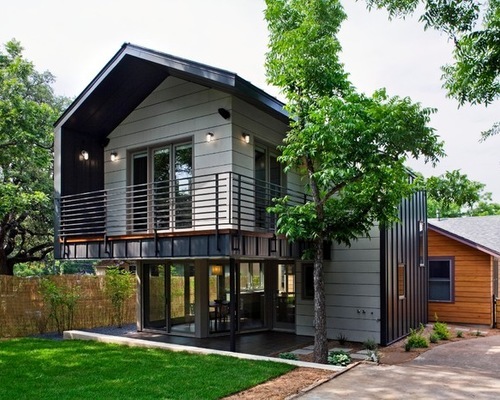
If you are working on a DIY remodel, deciding whether to call in a specialty contractor to perform a specific task comes down to several areas you’ll need to consider:
Skill. Do you have the necessary skills to build a sound structure, and do it safely?
Scale. Is the size of the project one that you can handle in a reasonable amount of time?
Cost. When factoring in the value of your own time, can the project be completed for less cost by a professional? Do you have the tools you need?
Aesthetics. Can you finish the project attractively enough that you’re not sacrificing resale value? Would a rough grout joint or wallpaper seam bother you?
Learn more about the specific problem areas that often require professional help below.

Contractor 1: Weber + Studio Architects, original photo on Houzz
1. Structural elements. Beams, footers, headers etc. — these are the unglamorous and often hidden parts of a home that are critical to its long-term stability and safety. Don’t take chances with structural components. Everything should be drawn or approved by an engineer, whose specifications should be followed to the letter.

Contractor 2: Re:Vision Architecture, original photo on Houzz
2. Electrical. Here’s another one where safety and skill intersect. Poor wiring can be a safety hazard — just because you were able to wire something up and it worked, doesn’t mean you haven’t created a safety hazard. If you aren’t confident you have the knowledge to perform the needed work and assess the implications of your work on the rest of the circuit and panel, call in a professional.

Contractor 3: Jeffrey Dungan Architects, original photo on Houzz
3. Roofing. Here’s a good example of a project where even if you feel you have the skills to perform the task safely and properly, you may not be able to complete the project in a short enough period of time to avoid exposing your home to damage from rain. If you can’t get your roofing project done in a couple days, don’t start it. Even professionals can underestimate the time a project will take to complete, so you may want to double your estimate.
Related: Siding Contractors to Get the Job Done
4. Plumbing. A clogged drain line and a faucet that needs to be replaced are tasks that you know you can complete. Before you do either yourself, though, think about the true cost.
What is your time worth? Do you have the tools? If you end up renting a drain snake from the home center that doesn’t work when you get it home, and you need to make another trip before you even clear the drain, you may lose much of a precious Saturday.

Contractor 4: Buckminster Green LLC, original photo on Houzz
5. Insulation. Certain types of insulation, such as spray foam, should be left to the professionals. Many people assume that installing batt insulation like fiberglass is an easy project, but there is a lot of room for error here. If you leave gaps you can create spots that draw heat and moisture into your walls — a bad combination. Even if you do the job well, it’s messy work. Plus, insulation contractors get a much better deal on the material costs than you would, offsetting the labor savings of a DIY project.
6. Carpentry. Even if you have the skills to complete the project, professional carpenters will have the tools and experience to get the job done quickly. If you are trying to complete the project on a part-time basis, remember to factor in setup and cleanup time. Working a full day is often much more efficient than an hour here and there.

Contractor 5: Ike Kligerman Barkley, original photo on Houzz
7. Masonry. This is one that bridges all four factors — if there is a structural component to the masonry project (and there usually is), safety is a concern. The scale of projects involving stone, brick and concrete can be deceiving. Make sure you know what you’re getting into. Wrestling a heavy stone into place and making it look good takes years to master. When you factor in all of this, the cost of paying for good work can be a bargain.
8. Wallpaper. There isn’t much room for error here. You have to get it right the first time. You’re drawing attention to the wall by dressing it up, so it had better look good. You wouldn’t pay an arm and a leg for a beautiful fabric and then make a sloppy-looking dress, so don’t buy a gorgeous paper and put it up with misaligned seams and bad corners.

Contractor 6: Buckminster Green LLC, original photo on Houzz
9. Tile. The pace of tile installation is slower than that of wallpaper, and there is a lot of contemplation that goes into a good tile installation. If you aren’t experienced, you may discover something you should have thought about when it’s too late. You also want to prep correctly. Tiles are all different and require different approaches to installation. Your DIY tile floor may look good when it’s done, but can you be sure it will hold up and not crack in a year or two? If you are confident about that, go for it. If not, call a professional.
10. Painting. I know, it sounds ridiculous — if you can’t paint, what DIY project can you do? Keep in mind, I’m not here to stop you from painting your own house. Just consider that a good, lasting paint job takes a lot of prep work. Sometimes this can involve wall repair, scraping paint (which can be a health risk if it’s lead paint), priming and caulking over old finishes with various products. Depending on what you’re working with, you may need someone with more experience to help.
By Kenny Grono, Houzz
 Facebook
Facebook
 X
X
 Pinterest
Pinterest
 Copy Link
Copy Link


